Data Analysis Guide for Web3 Game Developers
Author: lesley@footprint.network
In the highly competitive Web3 gaming industry, success depends not only on the launch of the game but also on having a high level of sensitivity during the game's operation to respond to the next bull market.
There is a strong confidence in the gaming industry for 2024. The marketing head of A16Z GAMES and GAMES FUND ONE, Doug McCracken stated: "Recently, many people in the market have been discussing Disney's re-entry into the video game market, but I believe that some video game company will become the next Disney."
The thriving Web3 gaming industry demands higher standards from operations professionals. In order to improve user retention, enhance user engagement, and extend the lifecycle of gaming products, in-depth data analysis has become crucial.
This article delves into the methods of data analysis in Web3 gaming, providing game developers with insights on analytical methods, tool exploration, and more valuable insights.
Data Analysis Guide for Web3 Game Developers
With the market's recovery, the Web3 gaming market has also shown good development signs since December.
However, we must recognize that Web3 gaming is still in its infancy, with the number of active participants far behind that of the Web2 gaming community. All industry practitioners are actively working to explore sustainable and scalable methods for Web3 gaming.
In the early stages of a game, analyzing market segmentation, competitor data, and on-chain participation data is crucial. However, what truly changes the fate of the game is mid-term customer acquisition; developers should closely monitor user-related data, revenue metrics, and stay updated on industry developments.
Data Analysis Principles for Web3 Game Developers
Web3 game developers should note that precise data analysis is vital for making informed decisions.
In Web3, a common approach to game development is to start with creative storytelling to attract high-quality early users, then find ways to analyze user profiles and optimize the gaming experience to expand the user base. Developers need to conduct in-depth analysis by collecting comprehensive data to break personal biases and reliance on experience, thus driving game development more objectively.
Data dimensions developers should focus on include: monitoring user retention and churn to drive continuous growth; identifying player behavior patterns in engaging with the game to design more attractive game mechanics; evaluating different monetization models to optimize game revenue, etc.
User Data: The Key to Success in the Gaming Market
As one of the top three dApps, our success comes from a deep understanding of customer needs, precise channel targeting, and ensuring users have a good experience in our application, making them willing to continue using it.
------ Wali Khan, Co-founder of Gamifly
In the Web3 gaming space, user-related data plays a crucial role, including user acquisition data and user profile analysis.
In the Web3 economic ecosystem, users are not only players but also creators and investors, key to the economic value of games. Active participation from players is essential for the sustainable development of the gaming ecosystem.
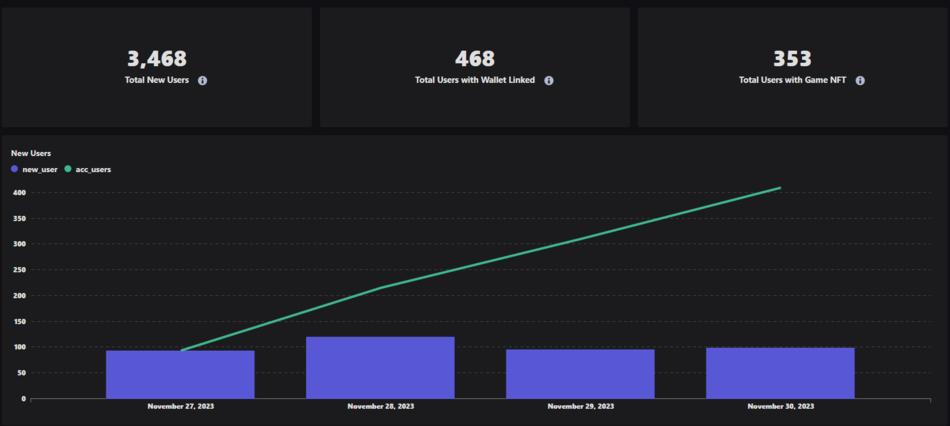
User-related Data
"Understanding the sources of new users is crucial for optimizing marketing strategies and effectively allocating resources," said Krish Jagirdar, co-founder of Internet Game.
Game developers can explore high-value user behavior patterns through user data and typical user profiles.
At the same time, re-engagement analysis of inactive users can help reduce user churn and improve the overall health of the gaming ecosystem.
Active Data is the Cornerstone of Sustainable Gaming
The success of Web3 games often relies on an active community. Monitoring community metrics helps gauge the health of player interactions beyond the game itself, not limited to the game alone.
------ Krish Jagirdar, Co-founder of Internet Game
To ensure the continuous development of games, it is equally important to focus on user activity data in addition to attracting new users. This is because active user data can reflect users' recognition of the game's playability or economic model, showing their willingness to invest time, energy, and even money for the enjoyment or rewards of the game.
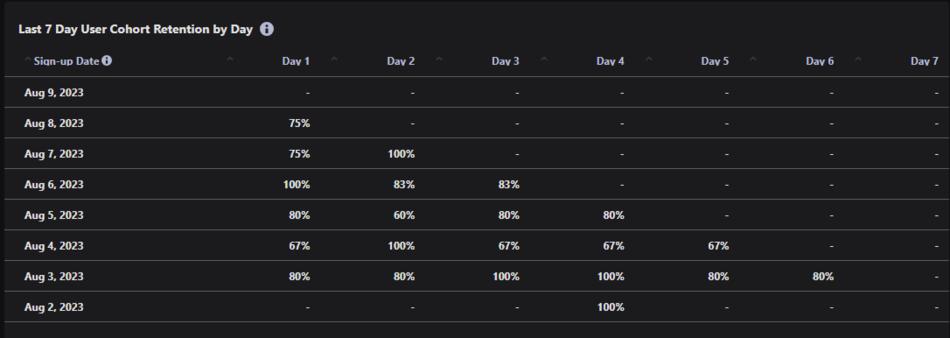
User Seven-Day Retention Rate
In the Web3 gaming field, user retention rate is also a significant metric. In this attention-scarce domain, the cost of attracting new users is high, so for project teams, working hard to retain existing users is more economical. "Retention rate is an important metric in the current market, similar to Web2. A high retention rate means users not only enjoy the game but also recognize its economic model, reflecting their acceptance of the game product," said Hoshino Sasaki, community ambassador of Outer.gg.
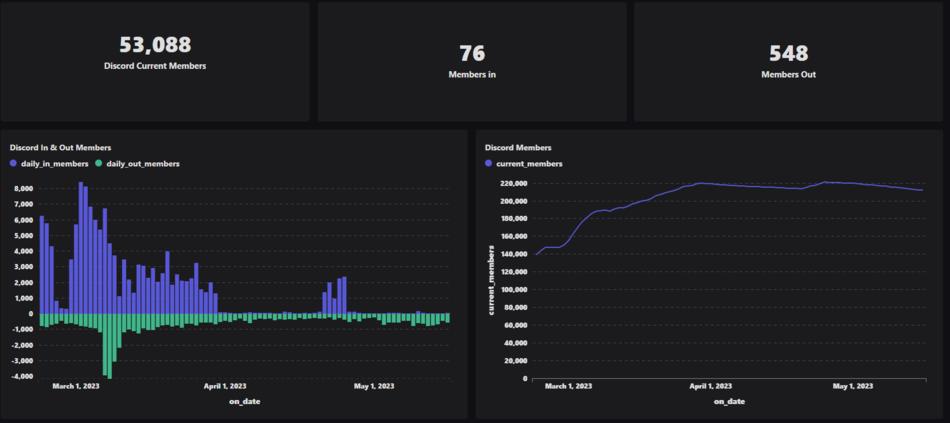
Community Participation Data of Web3 Games
Community participation is also very important in Web3. An active community represents a diverse group of individuals who actively engage in the gaming ecosystem. Participants in the gaming community typically include players, analysts, community ambassadors, etc. Official game communities are the main channels for players to receive official announcements and the primary battleground for community member interactions. Therefore, analyzing community data, such as trends in member numbers and community engagement, is crucial for game developers.
Currently, the inability to integrate Web2 and Web3 data for analysis poses a major challenge, complicating the analysis around the entire user funnel. Footprint Growth Analytics can provide a holistic perspective for comprehensive data analysis by connecting Web2 and Web3 data.
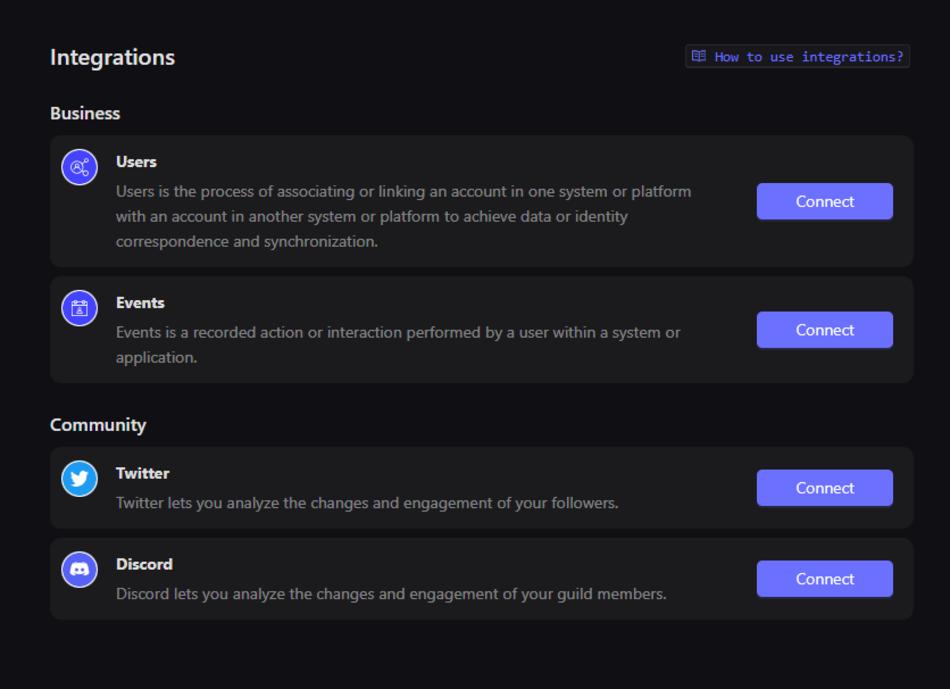
Integration of Web2 and Web3 Data
Revenue Data as a Compass for Strategic Decisions
At this stage, Web3 remains a field that requires funding and financial support. The willingness of the user community to invest in the game directly reflects the market share of that game project.
------ Hoshino Sasaki, Community Ambassador of Outer.gg
Revenue data is extremely important in Web3 gaming. On one hand, team revenue is the cornerstone of project development; on the other hand, user revenue is crucial for retaining early users, especially in the rapidly evolving Web3 gaming industry.
In the early stages of Web3 games, most developers first focus on building the game's economic model to attract more users through the "play-to-earn" model.
Although the foundation of revenue lies in the design of the economic model, once the game is running stably, continuous revenue monitoring is equally important. This allows developers to adjust game design in a timely manner to attract more users. Revenue levels and growth directly influence external investors' and the market's perception of the game's value.

Project NFT Revenue
Monitoring the value of blockchain games includes tracking the prices and circulation of NFTs and game tokens.
"In blockchain games, the success of NFTs is crucial. Monitoring ownership, transaction status, and rarity metrics of NFTs can provide users with important data about the popularity and value of in-game assets," said Krish Jagirdar.
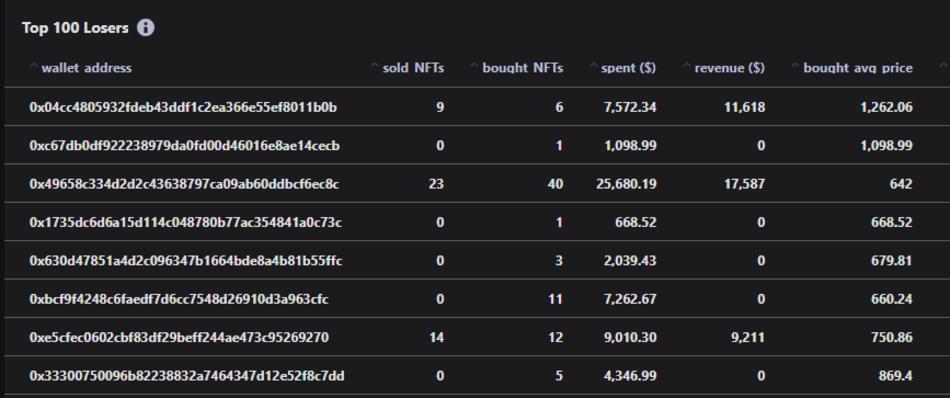
Top 100 Losses
Additionally, closely monitoring profitable and unprofitable players in the market and studying whether the game's reward system aligns with user expectations and motivations provides profound insights for analyzing the design of the game's economic model. They are also important tools for identifying reasons for user churn, such as mismatches between effort and reward, difficulty for new users to profit, inflation eroding profits, or speculative behavior squeezing out long-term investments, all of which can lead to user loss.
Data Analysis Tools for Web3 Game Developers
Many games currently rely on simple Web2 tools to monitor game operations, including Google Analytics and SimilarWeb. Some larger companies, such as Gamifly, have begun developing internal analytics solutions.
"I believe the Web3 data analytics tool industry is still in its early stages, and widespread adoption by game developers has not yet been achieved. I believe that excellent game data analytics companies like Footprint Analytics will become more prevalent over time," said Krish Jagirdar.
While using Web2 software may provide some basic data, they fall far short in providing deep insights into the complex world of Web3 gaming. Moreover, for startup Web3 games, developing internal analytics tools poses a significant challenge due to the complexity and cost of indexing Web3 data.
However, we must recognize that data analysis should not be a high-threshold endeavor. Effectively utilizing data analysis tools and strategically capturing key on-chain and off-chain data can provide important support for decision-making and development in Web3 games.
Here are some commonly used tools by Web3 game developers.

Footprint Growth Analytics
Footprint Growth Analytics
Footprint Growth Analytics is the preferred analytics tool for Web3 game developers, offering comprehensive data from over 30 blockchains, with a user-friendly website that simplifies the data utilization process. Footprint provides comprehensive features such as asset performance, revenue analysis, wallet data, user exploration, and onboarding, enabling game developers to easily gain valuable insights to optimize their projects. Footprint allows game developers to easily leverage data to facilitate informed decision-making and drive better survival of Web3 games in a changing market.
Degame

Degame
DeGame is the world's largest NFT game aggregator, having launched over 4,000 blockchain game projects and 1,000+ game tokens & game chains since its launch in 2021. DeGame has established partnerships with over 50 guilds and public chains, providing a one-stop service platform for NFT game enthusiasts and developers. In 2023, DeGame launched the contribution proof platform DeGame Community, a one-stop shop for global Web3 users to discover and play the most exciting new projects and games. Early developers, project ambassadors, KOLs, and community organizers can prove their contributions to the project and gain recognition through identity roles and rewards.
Galxe
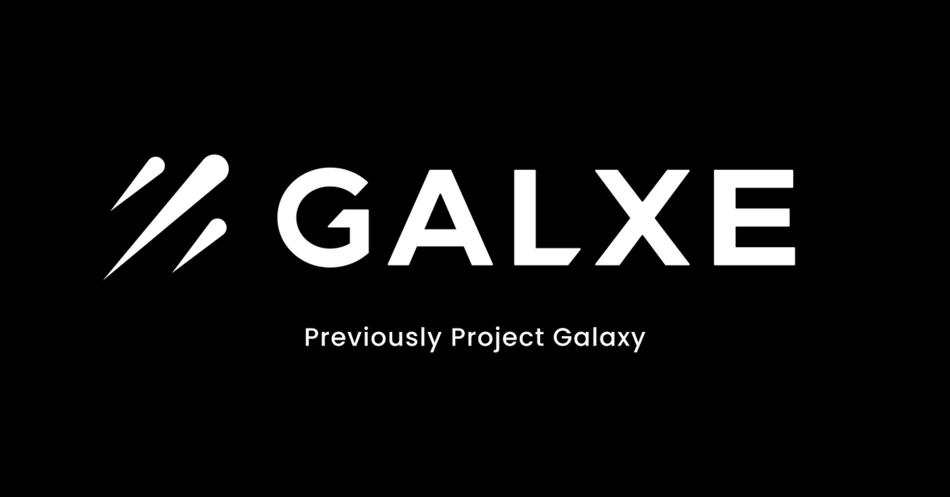
Galxe
Galxe is a mission-driven platform aimed at helping games grow and addressing the customer acquisition challenges in Web3 gaming. The platform provides opportunities for games to publish tasks, such as registering for games, joining communities, and providing incentives. As a leading platform for building Web3 communities, Galxe has currently attracted over 14 million unique users and has driven growth for Optimism, Polygon, Arbitrum, and over 4,000 partners through a reward-based loyalty program.
Conclusion
Web3 gaming is still in its early development stages. Although data analysis in gaming faces challenges such as data acquisition and processing, the importance of data analysis cannot be overlooked.
Data analysis is not a burden for developers; rather, it is a powerful tool to enhance the core competitiveness of projects. Developers should adopt a data-driven mindset and seek professional data analysis services to promote the sustained growth of their projects.
Furthermore, the entire Web3 data industry should strive to break down data barriers and create better collaborative infrastructures. In this way, data can play a key role in driving the prosperity and development of the Web3 gaming industry.









